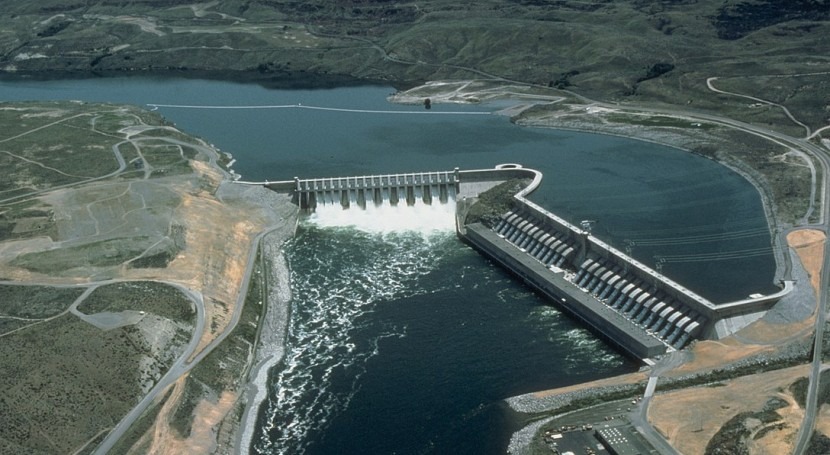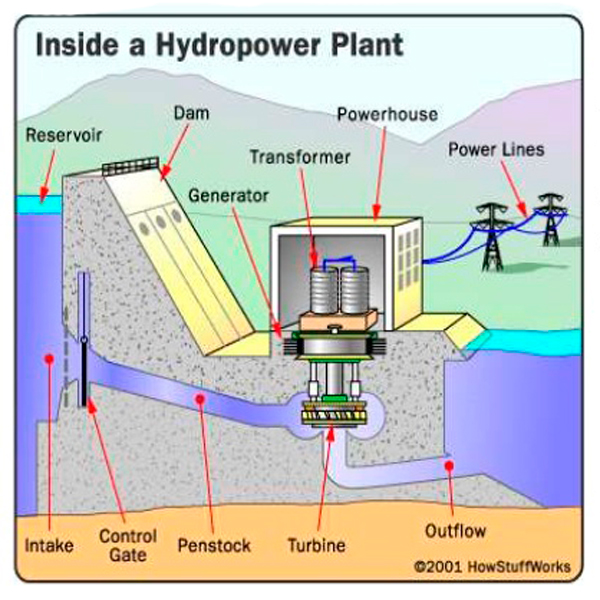What is a hydroelectric power plant, and how does it work?

Hydroelectric power is obtained from the potential energy of a water body located at a certain height above a river channel, which is converted into kinetic energy, and finally into electrical energy at the lowest point in the river channel.
1 . Hydroelectric power plant
A hydroelectric power plant comprises a set of facilities and electromechanical equipment used to transform water's potential energy into electrical energy, and can operate constantly. The available electrical energy is proportional to the flow rate and the drop in elevation.
2 . Parts of a hydroelectric power plant
A hydroelectric power plant has the following parts:
Dam or weir: it contains the river water, forming a reservoir behind it and thus creating a water drop that is used to produce energy. Dams can be made of earth or concrete (the latter is the most common one).
Spillways: They release part of the impounded water without passing through the turbines; water can then be used for irrigation purposes. They are located on the main wall of the dam and can be at the top or at the bottom. Most of the water goes into a plunge pool at the toe of the dam, to prevent scour damage by the falling water.
Water intakes: they let in the impounded water towards the turbines through a penstock. Water intakes have gates to control the amount of water that reaches the turbines and grids to filter out any debris such as trunks, branches, etc.
Powerhouse: it houses the hydraulic and electrical equipment (turbines, generators, transformers) and the service area with control and testing rooms. It has inlet and outlet gates to ensure the equipment area can be dry in case of repairs or disassembling equipment.
Turbines: they harness the energy of the water that goes through them to rotate around a shaft. There are three main types of turbines: Pelton, Francis and Kaplan turbines (propeller type).
Transformers: electrical devices to increase or decrease the voltage in an alternating current circuit, while maintaining the electric power.
Electrical power transmission lines: cables to transmit the electricity generated.

D. Kanakaraja. AITS. Titupati.
3 . Types of hydroelectric power plants
There are three types of hydroelectric power plants:
Run-of-the-river power plants: these hydroelectric power plants withdraw water from the river based on the available water flow, which depends on environmental conditions, and run it through the turbines. The drop in elevation is small and these power plants require a constant water flow.
Hydroelectric power plants with a reservoir: they are hydroelectric power plants that use an upstream water impoundment with a dam. The reservoir regulates the amount of water going through the turbines and producing electrical energy year-round, independently of the water flow in the river. This type of plants allows using most of the energy produced and the kilowatts hour are usually cheaper.
Pumped-storage hydroelectric power plants: they are hydroelectric power plants with two reservoirs at different elevations, which are operated when there is an extra demand of electrical energy. Water in the upper reservoir goes through the turbine and flows into the lower reservoir, and is later pumped back up to the upper reservoir at the time of day when there is not such a high demand of energy.

